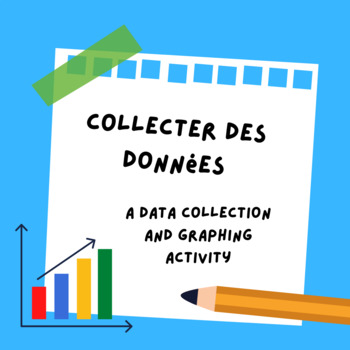Collecte et organisation des données - Data Literacy - Graphing - FRENCH
- PDF
Description
A simple and straightforward (and fun!) data collection activity for primary students in the French Immersion or junior students in the Core French program (ask and answer questions in surveys; use numbers, words, and pictures to illustrate the findings). Your students will create a question, conduct a survey, compile and represent the data collected in a bar graph and pictograph, and draw conclusions. A student-friendly rubric is included. Based on the Ontario Curriculum.
= = = = = = = = = =
I hope you enjoy this resource. Follow my store (⭐CLICK HERE ) for more French Immersion / Core French / FSL / FLE products.
Receive TPT credits that can be used for future purchases, by leaving feedback!
= = = = = = = = = =
From the The Ontario Curriculum Grades 1-8: Mathematics, 2020:
"Grade 2
D1.3 display sets of data, using one-to-one correspondence, in concrete graphs, pictographs, line plots, and bar graphs with proper sources, titles, and labels
D1.5 analyse different sets of data presented in various ways, including in logic diagrams, line plots, and bar graphs, by asking and answering questions about the data and drawing conclusions, then make convincing arguments and informed decisions
Grade 3
D1.2 collect data through observations, experiments, and interviews to answer questions of interest that focus on qualitative and quantitative data, and organize the data using frequency tables
D1.3 display sets of data, using many-to-one correspondence, in pictographs and bar graphs with proper sources, titles, and labels, and appropriate scales
D1.5 analyse different sets of data presented in various ways, including in frequency tables and in graphs with different scales, by asking and answering questions about the data and drawing conclusions, then make convincing arguments and informed decisions."



